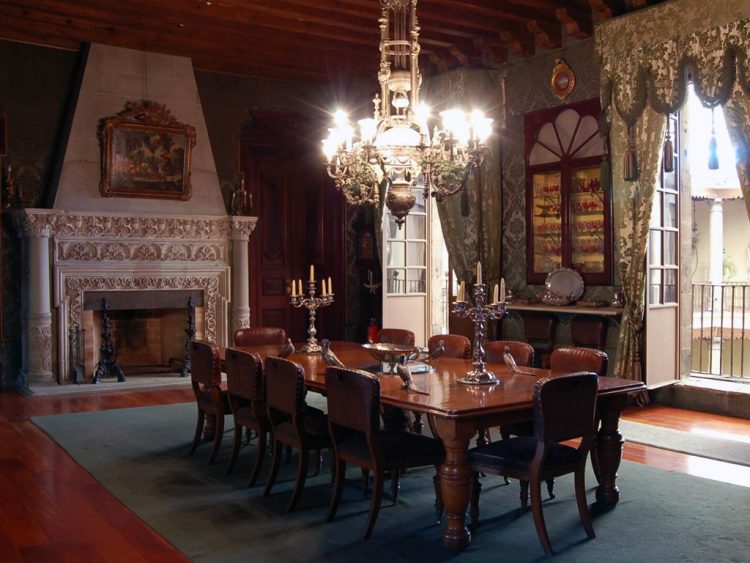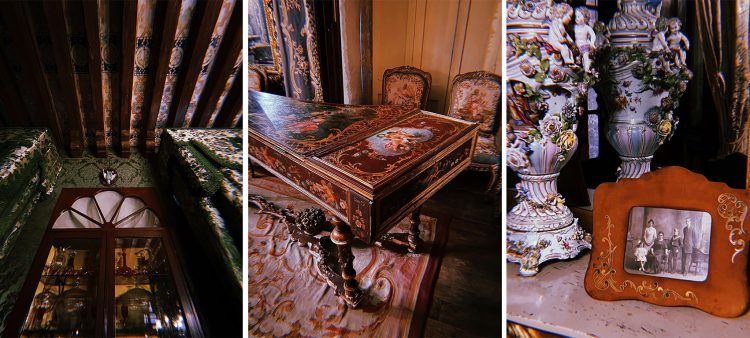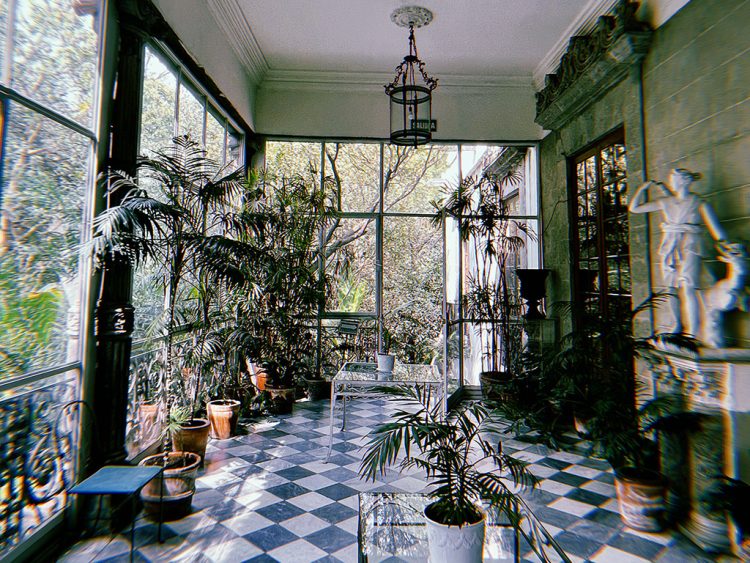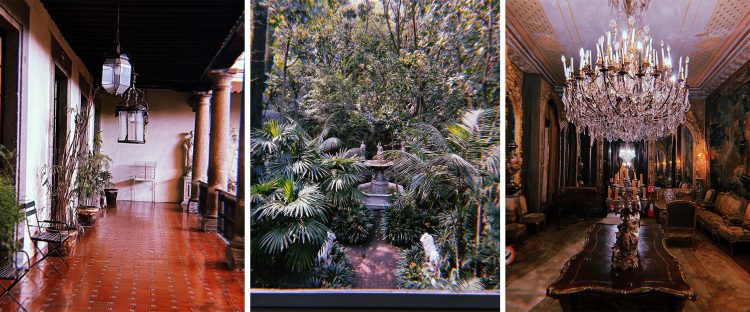
Museo Casa de la Bola, a private fantasy open to the public. At the Design Leadership Summit this October, the museum will host one of the DLN’s Dine-Around Dinners, as well as an informative tour for interested attendees.
In one of CDMX’s oldest existing homes, discover one man’s immersive fantasy about how previous generations may have lived.
Wandering the busy avenue bordering Parque Lira, few tourists suspect that a portal to the past exists just beyond a nearby stone wall. If you’re lucky enough to cross beyond this threshold, you’ll find yourself in a verdant garden, elaborately overgrown with vegetation, its chaos shaped around fluid cobbled pathways and figurative fountains. Out of this private forest rises a 16th-century house. Classical in character, its architecture reminds viewers of the city’s past lives, when Mexico City found itself caught between the past and the present, between colonial forces and the first peoples that established themselves in its heartland. Inside, the house is decorated with an enormous collection spanning four centuries, its focus on recreating the immersive splendor of turn-of-the-century high society.

Ornate wallcoverings, furniture reproductions, and black-and-white family photos transform the Museo Casa de la Bola into a time capsule. Images by Michael Diaz-Griffith.
Collector Antonio Haghenbeck y de la Lama dreamed of building another world hidden in plain sight within the heart of Mexico City. In the 1940s, he purchased the Casa de la Bola, originally constructed more than 400 years ago on a vast estate dedicated to producing olive oil. Perhaps he was intrigued by its previous owners, who included a leader of the Spanish Inquisition and a marquis, or its location on the border of the vaste Parque Lira. Whatever it was, something about the house spoke to him, and he began to remodel it in the manner of a Belle Epoque mansion. He filled the home, nearly wall to wall, with reproduction antiques mirroring the look of English 18th and 19th-century tastes, including elaborate Boulle-style furniture, popular in turn-of-the-century bourgeois homes—as well as porcelain, European tapestries, books, and lamps.

The conservatory was added by the house’s final owner, Antonio Haghenbeck y de la Lama. Image by Michael Diaz-Griffith.
To complement his vision, he built a second-floor conservatory using materials salvaged from his parents’ former home. From its encircling windows, visitors can look out at the gardens Haghenbeck y de la Lama created, along with ponds and the remains of mud canals left over from previous eras.
In the 1980s, Haghenbeck y de la Lama donated to the house to conserve a slice of the city’s past. A foundation in his name now manages the mansion, in addition to two other properties. Now open to the public, the museum draws in design lovers who appreciate its eccentric interiors. Tourists may just find that the fantastical, sensory-rich experience of touring the home captures the imagination more cunningly than a period room with authentic antiques.

The museum comprises 13 rooms and an interior courtyard, bordered by dignified stone columns. Images by Michael Diaz-Griffith.
Step inside the Casa de la Bola today, and it immediately seems different from other house museums. Rather than pulled close to the ceiling for protection, the elaborate, imported chandeliers hang so low to the floor that visitors are forced to duck beneath them, as if the owner has only stepped out for a moment to allow guests to take a tour. Taxidermy rugs lay out across the floors, sectioned off slightly from visitors’ footpaths. Framed black-and-white family photos hang on the walls and rest atop tidy side tables. You might imagine yourself as a 19th-century English tourist traveling to the home of a wealthy collector who has opened up his home for public viewing (à la Pride and Prejudice’s Elizabeth Bennett, inside the prestigious mansion of Mr. Darcy), as you wonder if the owner will descend upon the house once again to surprise his guests.
Haghenbeck y de la Lama may have seen his home as an accurate representation of his ancestors’ home life. Now, however, visitors are transported into the eccentric, emotional fantasy of a man in love with Europe’s past, who viewed collecting as a means to an earlier world, however distant, and however impossible to relive.